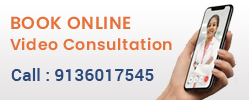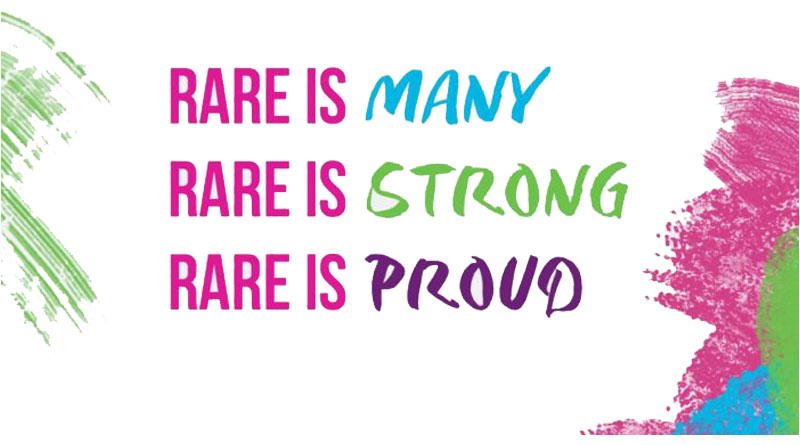#RareIsMany: How rare are Rare Diseases truly?
Reyna (name changed), a 12-year-old sprightful kid, cannot wait for school to restart. She is a bright girl and enlists her hobbies as yoga, solving the Rubik’s cube (and trying-on her elder sister’s wardrobe when alone). Amongst the many other routines, she is aware that she should avoid high-impact and contact sports. Reyna has episodes of recurrent joint dislocations and occasional splitting up of her lax and fragile skin under strain and at pressure points. Reyna was diagnosed with Ehler Danlos syndrome (EDS), a very rare disorder affecting approximately one in a 1,00,000 persons, at the age of 8-years; although she was on the radar of medical opinions for ‘floppiness and delayed motor milestones’ since the age of 6-months-age. This condition affects the skin, joints, heart and the connective tissues. Despite there being no ‘cure’ for her condition, her family feels empowered with the diagnosis. Reyna earnestly agrees to her routine multidisciplinary care, hopping through hospitals once in six months. With the help of a confirmed diagnosis of EDS, her doctors know exactly what they are chasing; keeping a keen watch on the known complications of this condition, through routine surveillance.
Reyna’s diagnostic odyssey is one of the many stories, which prompts me to write this blog; dedicating it to this year’s Rare Disease theme; raising awareness about rare disorders. Why do we need to diagnose them? Why do we need to do so early?
The urgency to create sensitisation in this area is highlighted by the fact that an individual in USA, with a rare disease typically meets an average of eight doctors (four generalists and four specialists), with two to three misdiagnoses in the course, and takes an average of seven years, to finally arrive at an accurate diagnosis. In a recent Indian survey to understand the baseline knowledge about rare diseases; of the 193 respondents of the medical fraternity, nearly three-fourths had no awareness about rare diseases, while 43% of them claimed to have never catered to a patient with a rare disease.
Some examples of rare diseases include Duchenne muscular dystrophy, cystic fibrosis, Pompe disease, lysosomal storage disorders, multiple sclerosis, Marfan syndrome, amongst others. Irrespective of whether a disease affects millions of people or just a few, the impact of the disease on the family suffering it can be enormous! Nearly 50% of the rare diseases affect children, 30% of them will die before 5 years of age.
Nearly 80% of the rare disorders have an underlying genetic origin. Rational genetic tests, chosen judiciously can often help these families attain a timely diagnosis. Often confirmed, the accurate diagnosis is the first step towards understanding the depth and the breadth of the disease, exploring ways to mitigate the complications, gathering supportive treatment options, and when-available providing curative therapies too. A delayed diagnosis especially for rare disorders of ‘genetic origin’, could mean another child born in the family with the same rare disease, often adding to the financial and emotional woes borne by them.
As per definition by the European Union a disease is termed as ‘rare’ when the number of affected subjects is <1:2000. Individually there may be a lot of rare diseases fitting this definition, but taken as a ‘group’, the cumulative load of the 8000 known rare diseases is as high as 1:12.5 individuals, worldwide. And thus, one may extrapolate that, nearly one in every 13 persons will live with a rare disease at some point in their life. This may be a gross understatement given the large proverbial iceberg of undiagnosed and misdiagnosed cases. India shares nearly one-fourth of the rare disease burden of the world. In terms of absolute numbers, the Indian burden of rare diseases is estimated to be between 9-10 crores individuals.
Indeed, ‘Rare is Many’; and the challenges posed by ‘Rare’ are in fact far more global than perceived. We need to rise to the calling of these families and enable a more ‘aware’ society towards these not-so-rare disorders. We need to bring up a generation more sensitised to the rare-disease cues and needs, aim at better Government and insurance policies, establish more support and advocacy groups and envision more cures and care for them, along the way.
It is pegged that if all the 300 million+ individuals with rare diseases lived in one country, this would be the third-most populous country in the world. And we don’t need statistics to prove that if this third most populous country is happy, the world will be a happier place to live in!
#RareIsMany #RareIsStrong #RareIsProud #RareIsThere #RareDiseasesAwareness2021 #RareDiseaseDay #GeneticDiseases #ChildhoodOnsetRareDiseases #NotSoRare #DoNotMiss #ThinkRare #ThinkZebra #ISupportRareDiseaseDay #RareConnect #ShowYourStripes #ZebraStrong #WeCareAboutRare #ShowYouCare #Underdiagnosis #Misdiagnosis #DiagnosticOdyssey #OrphanDiseases #RareDiseasePolicy #SpreadHope #1in20 #UnmetNeed #ShareYourStory #PublicHealthPriority
References:
The Lancet Diabetes Endocrinology. Spotlight on rare diseases. Lancet Diabetes Endocrinol 2019;7:75.
Danese E, Lippi G. Rare diseases: the paradox of an emerging challenge. Ann Transl Med 2018;6:329.
Agrawal et al. Baseline knowledge of rare diseases in India- a survey. Int J Rare Dis Disord 2019;2:008.
Nguengang Wakap, S., Lambert, D.M., Olry, A. et al. Estimating cumulative point prevalence of rare diseases: analysis of the Orphanet database. Eur J Hum Genet 2020;28,165–73.
URL:https://timesofindia.indiatimes.com/city/hyderabad/difficult-to-identify-patient-with-rare-disease/articleshow/68247655.cms (accessed on 19 February 2021)
URL: https://www.rarediseaseday.org/article/what-is-rare-disease-day (accessed on 19 February 2021)
URL:https://main.mohfw.gov.in/newshighlights/national-policy-rare-diseases-2020 (accessed on 19 February 2021)



